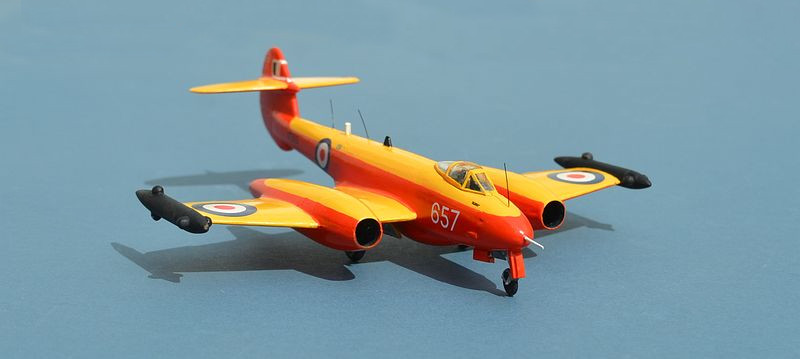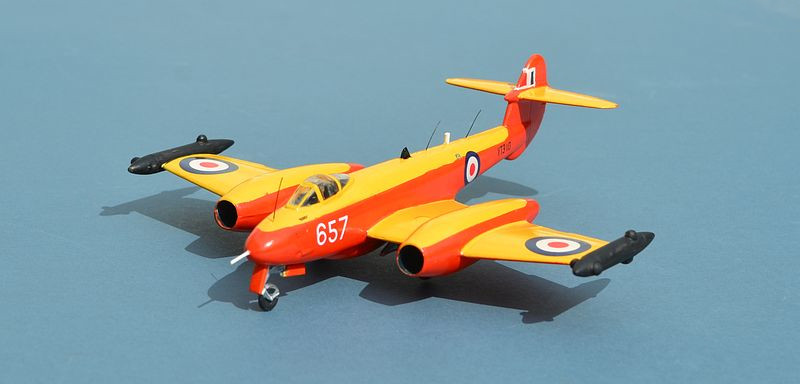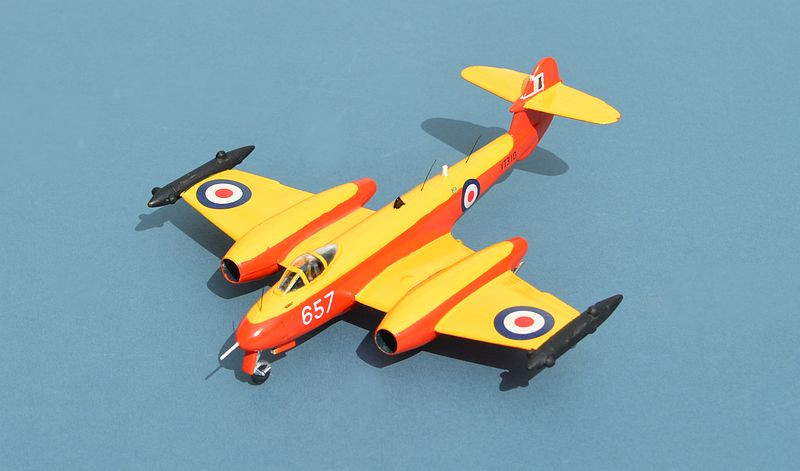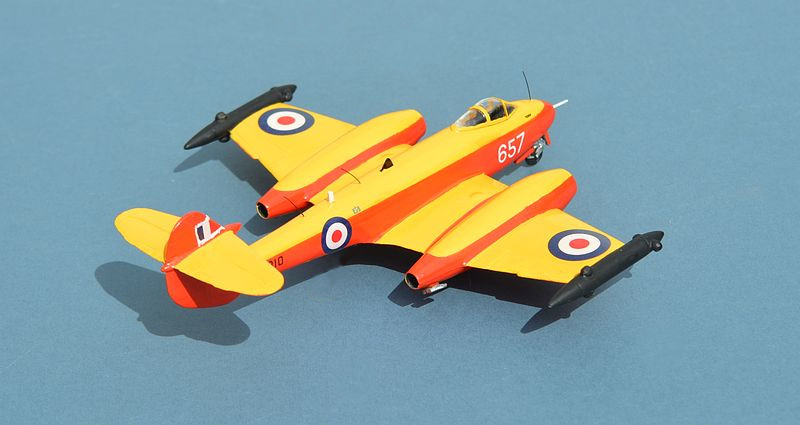Royal Navy Jets 1945 to the 1970s
DeHavilland/Hawker Siddeley Sea Vixen
I have particular soft spot for the Sea Vixen, having build my first kit in 1976 (the Frog FAW.2 below) and my most recent in 2021 (the Xtrakit FAW. 2).
Despite an astonishingly long gestation, the Sea Vixen FAW.1, armed with the FireStreak
Infra-

The Sea Vixen represented the end of DeHavilland's highly successful twin boom family; sadly it will always be remembered for the horrific crash into the crowd of the DH110 prototype at the 1952 SBAC Farnborough Airshow, which led directly to the strict SBAC airshow safety rules against flying over the crowd line, that still apply to all public airshows in the UK.
The more advanced FAW2 added "saddle" fuel tanks over the twin booms and swapped the first generation Firestreak missile for the much more capable Red Top. The Observer's hatch was modified with a frangible perspex canopy allowing him to eject through the canopy if needed (sadly, Sea Vixens suffered from a high rate of accidents).
The FAW1 was the mount of the famous 766 Squadron "Fred's Five" Royal Navy formation display team, a role subsequently taken up by the FAW2 and the "Simons Sircus" formation display team, named after the 766 Sqn CO, Lt Cdr Simon Idiens RN.
Although a capable and effective aircraft, it was never really "state of the art". Retired prematurely as a result of the UK Government's austerity decision to withdraw from "East of Suez" in the early 1970s, it was never tested in combat, although Sea Vixens saw active operations during the 1961 Kuwait crisis, the Tanganyika mutiny, Radfan rebellion, withdrawal from Aden and the Biera Patrol blockade of Rhodesia.
Hawker Siddeley Sea Vixen FAW Mk2 -
Airfix have produced a truly modern "state of the art" kit in their 1/48 scale Sea Vixen. Easy to build (but very large when built!) it is the most accurate Sea Vixen kit available (link to the first of several build pages).
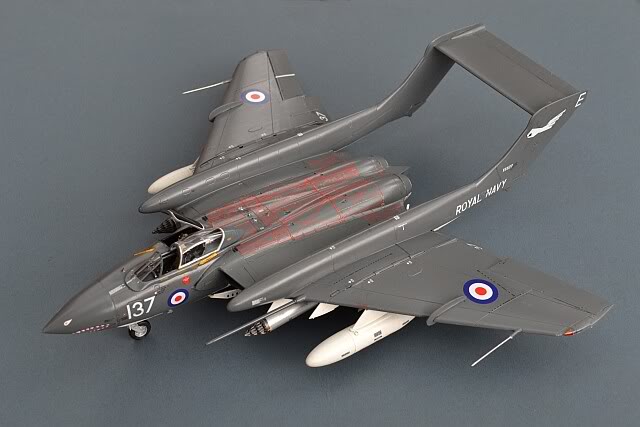
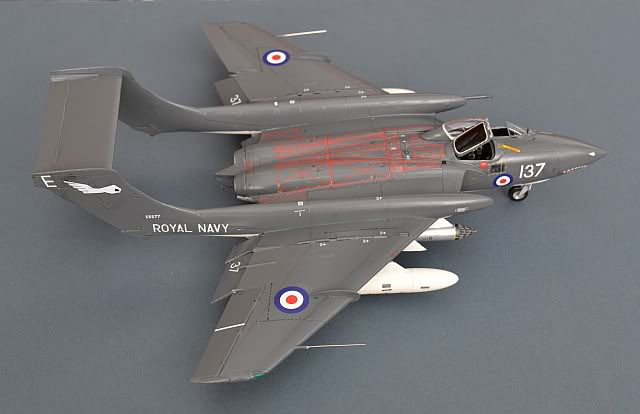
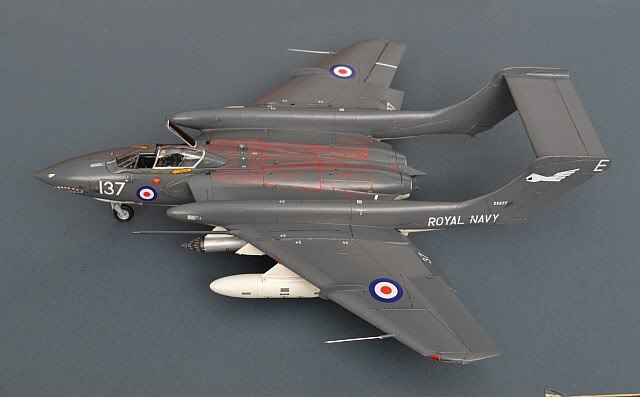
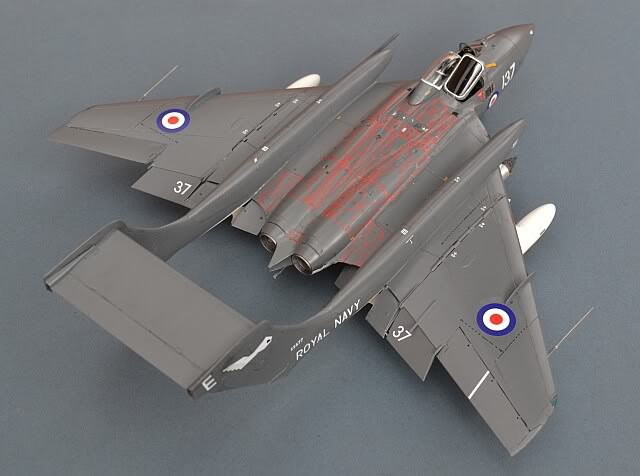
This is the old Frog FAW.2 kit (or rather a Russian re-
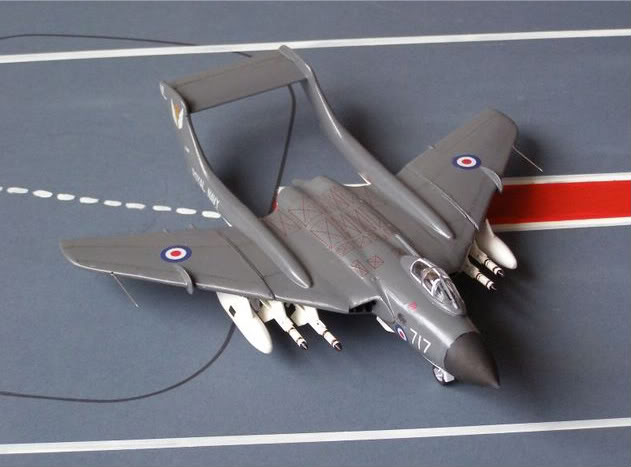

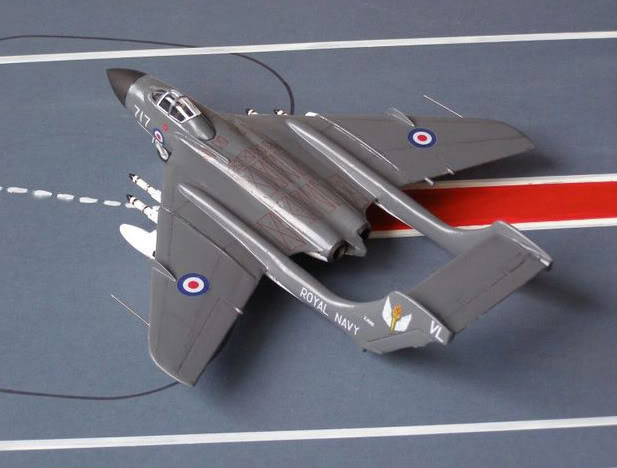
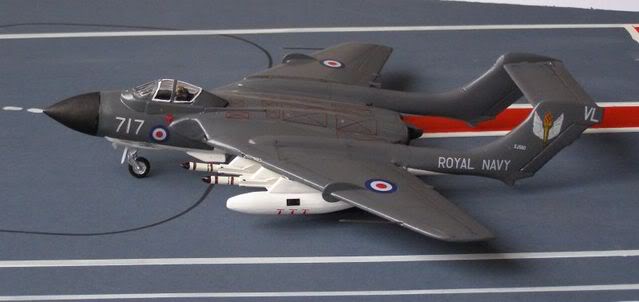
This was one of the last kits issued by Frog; I bought this kit in the very week
in 1976 that their demise was announced. A typical Frog kit -
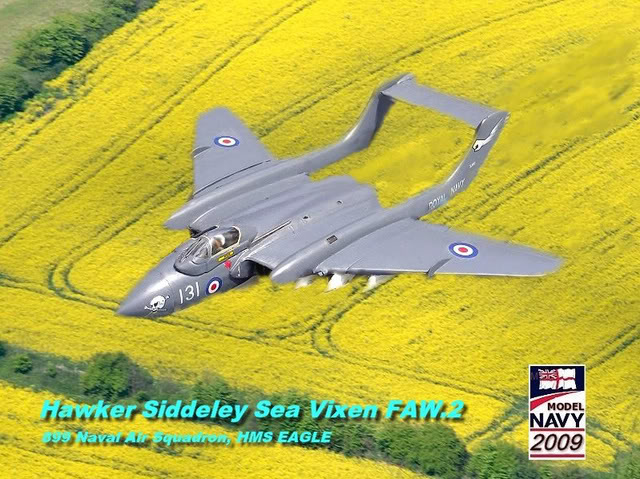
Photoshopped from an original picture by LA(Phot) Owen King Royal Navy
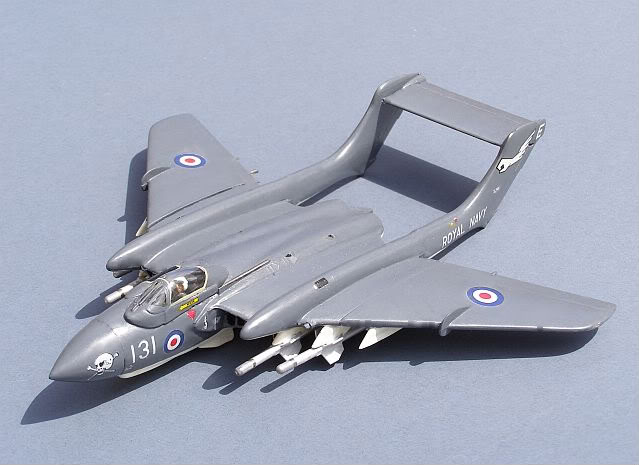
Sea Vixen XP924 "G-
in corporate silver/blue/red colours, she has recently been repainted in her original service markings.
Here she is at the 2009 RNAS Yeovilton Air Show, where she gave a spirited display, despite the poor weather!
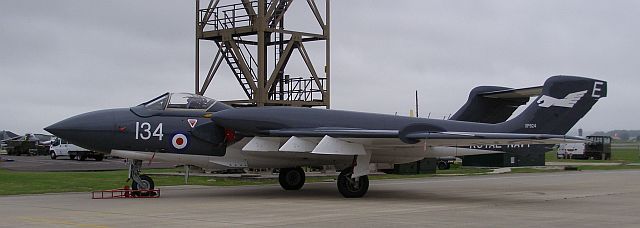
This project was a way to use up one of the (now outdated) FROG Sea Vixen kits in my 'stash'. Its booms have been shortened, wing folds removed, nose blunted and a few other bits and bobs changed. (Link to build page)
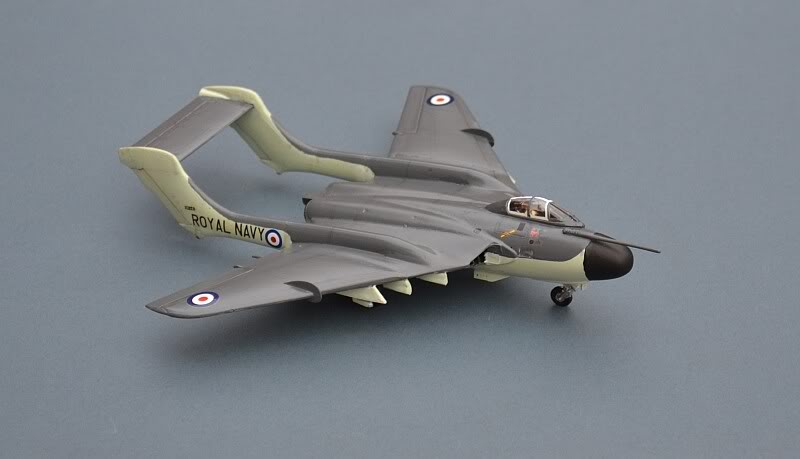
Development of the DH110 started in 1949 and it first flew 2 years later. In September 1952 at the Farnborough Air Show, whilst maneuvering hard at the end of a supersonic run toward the crowd, the first DH110 prototype disintegrated in the air, killing pilot John Derry and test observer Anthony Richards instantly.
As the airframe broke up, the DH110's engines and cockpit section continued into the crowd, killing 29 spectators and injuring over 60.
After a redesign of the wing structure, flight testing resumed in 1954; XF828, the
first semi-
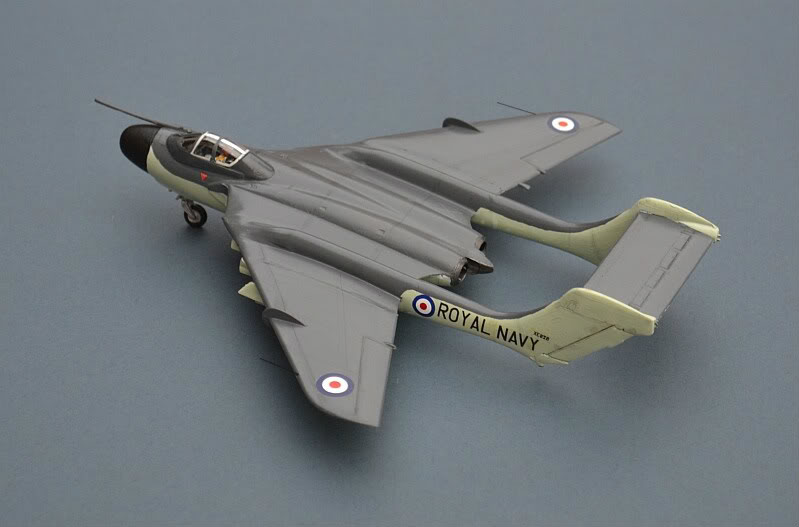
The Airfix Buccaneer kit started life as the NA39 prototype and was subsequently
released as the early S1 version. This is the US Craftmaster issue of the kit with
various modifications, refinements & Model Alliance decals. (Link to Build Page and
barmy box-
Blackburn's Buccaneer was an impressively advanced aircraft, with complex aerodynamics
and avionics, blown boundary layer control to reduce landing speeds and a strengthened
airframe optimised for very low level operation over land and sea. Early Buccaneers
were an all-
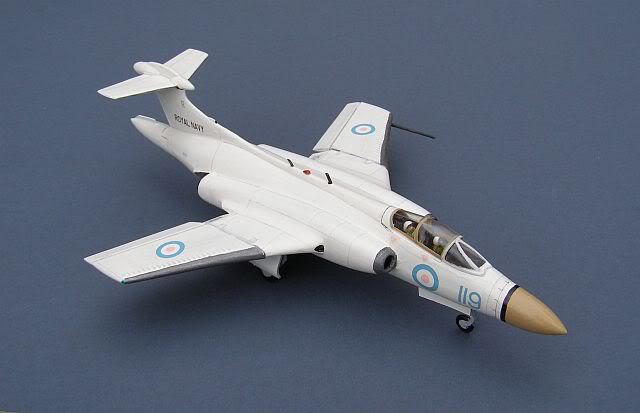
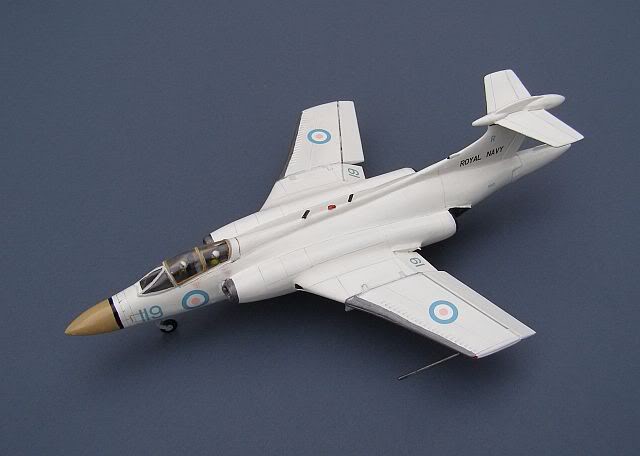
Arming The Buccaneer: In its original form, the Buccaneer was designed as a Naval
Nuclear Strike Aircraft, specifically targeted against Soviet Sverdlov Class Cruisers,
which, it was deemed, posed a real threat to NATO surface ships. For this role it
carried Red Beard, the UK's first tactical nuclear weapon (10-
For the Naval Buccaneer S.2, Red Beard was substituted in the 1970s by the much lighter WE177A weapon, of which it could carry two (link to my S.2 Build).
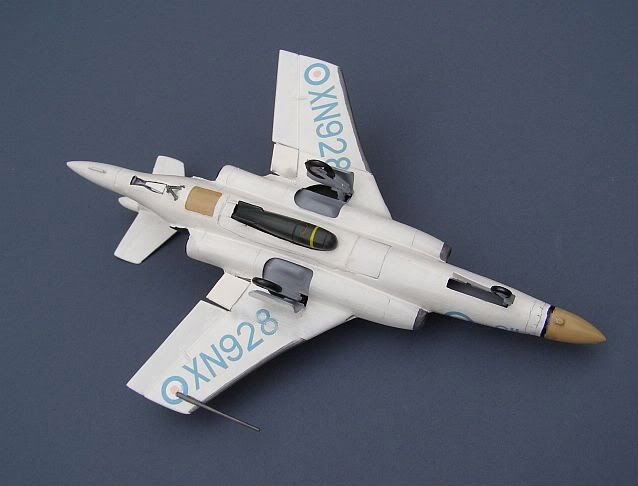
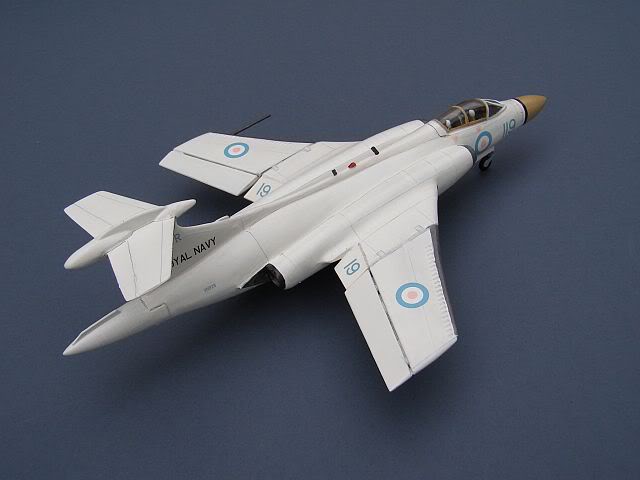
Supermarine Vickers Scimitar F.1
The last of an outstanding line of Supermarine naval aircraft, leading back through the Seafire to the Schneider Trophy winners of the 1930s, the elegant Scimitar was the first RN aircraft to exceed the speed of sound (albeit in a shallow dive) and also the first capable of carrying a nuclear weapon. Scimitars represented a huge leap in size, technology and complexity for the RN but were not altogether successful operating from the RN's small carriers; of 76 built, an astonishing 39 were lost in accidents.
Scimitars served with four front line Royal Navy squadrons, 800 (ARK ROYAL, EAGLE), 803 (VICTORIOUS, HERMES, ARK ROYAL), 804 (HERMES) and 807 (ARK ROYAL, CENTAUR) , as well as 700X trials Sqn (RNAS Ford, Yeovilton), 736 Training Sqn (RNAS Lossiemouth) and Airwork Services Fleet Reqts Unit (FRU Hurn).
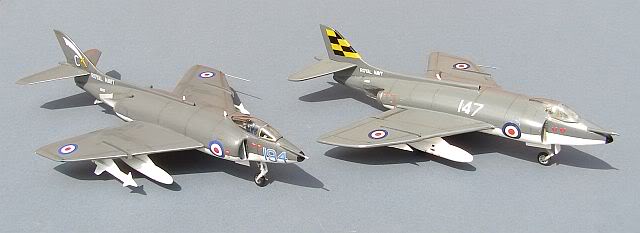
Scimitar F.1 -
Moulded by Sword and issued by Hannants as part of their Xtrakit series, this is currently the only injection moulded Scimitar kit. Although it has a number of accuracy issues, it captures the sleek and modern look of the Scimitar well. This one has only minor changes, including a pair of Frog (Hasegawa) Bullpup missiles. (Link to build page)
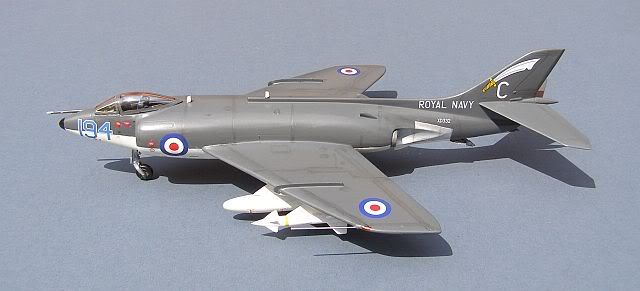
Originally designed as a fighter, armed with internal Aden canon and later with early
Sidewinder missiles (a scimitar was the first British aircraft to fire a Sidewinder),
its lack of AI radar and the success of the Sea Vixen interceptor meant that it was
quickly converted for the low level strike role, where it performed well. Scimitars
were equipped to carry a Red Beard tactical nuclear weapon, but inherent safety issues
with Red Beard meant that they were not permitted to do so in peacetime. A more normal
load included dumb bombs or the famously unreliable ASM-
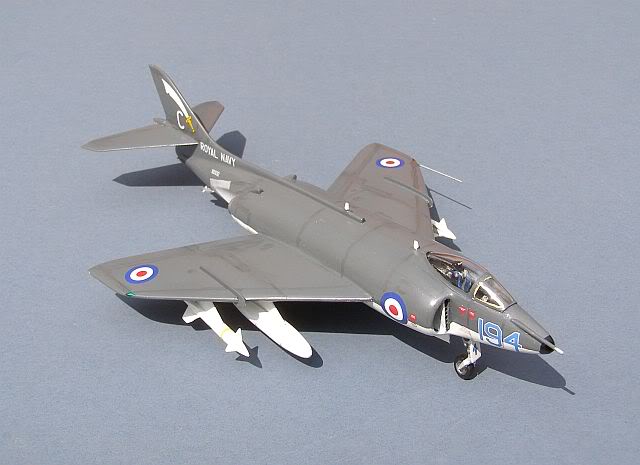

Scimitar F.1 -
Going back to the mid 1980s, this was my first ever vacform kit and I think it has held up pretty well as a build; not exactly detailed, but I think the nose and fuselage shape is better than the many recent resin releases. However, the Humbrol Satin varnish (out the tin) that I used at the time had badly yellowed over the years (Link to "before" picture). Since my painting and finishing techniques (and materials) have moved light years ahead since then, I thought that a rebuild and repaint would be in order, with a few added details as well.
Cockpit, pilot and jet nozzles are from an old Airfix Jaguar, drop tanks from my Frog Sea Vixen. Link to Build Page
Scimitars served for a comparatively short time, as technology was moving forward
at a rapid pace and the complexity of newer weapons was creating too high a workload
for single seat attack aircraft. The aircraft also introduced a great deal of new
(and unreliable) technology, such that at one stage it was reputed to require 1000
hrs of maintenance for each flying hour. After seeing active service during the threatened
invasion of Kuwait by Iraq in 1961, Scimitars finished their days as buddy-
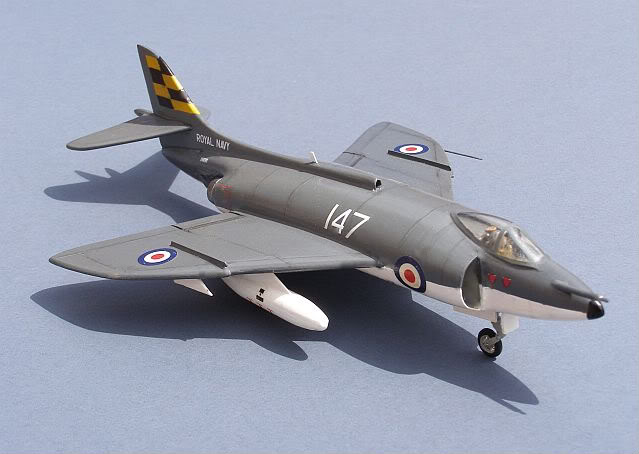
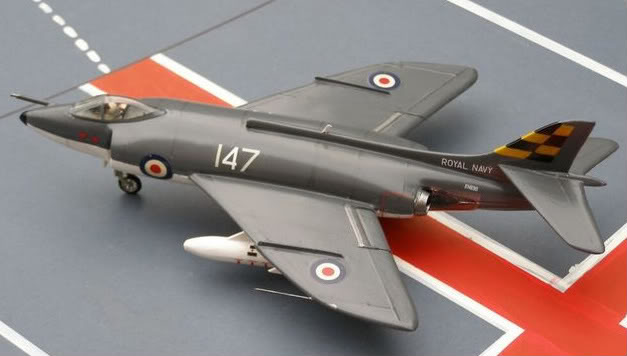
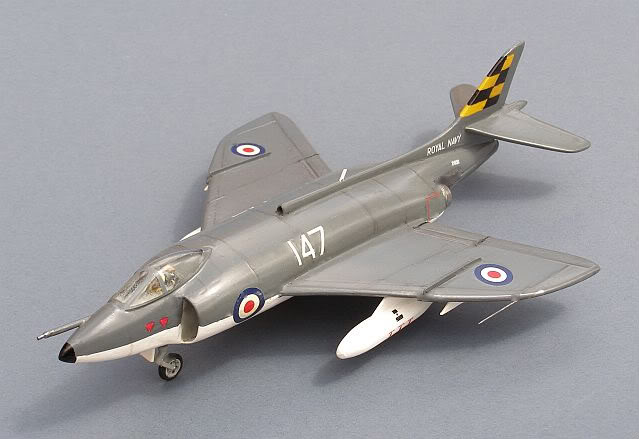
Airfix, built out the box, with a fuse wire tail hook and markings from the spares box. Link to Build Page
Two Derwent V powered Meteors were adapted for Carrier trials to investigate issues arising from jet operation at sea. After operating with HMS IMPLACABLE for a short time, they moved ashore to RNAS Ford with 778 Carrier Trials Sqn.
This particular aircraft is currently part of the FAA museum's reserve collection. This is the Matchbox kit, with a reshaped tail and nose. Link to Build Page
Early jet aircraft were sufficiently different that the RN concluded that a 2-
This is also the Matchbox kit, with rather less radical modifications -
From the late 1950s, several surplus RAF Meteor NF11s were converted by Armstrong Whitworth into high speed target tugs for the RN and RAF, towing Rushton, Sleeve and banner targets on 6000ft long cables for air to air and surface to air target practice.
See the separate Sea Hawk Pages for details of my expanding Sea Hawk collection:
For many years, the only 1/72 model of the Sea Venom was this Frog issue from the late 1960s. It is definitely one of Frog's better kits, although clearly not up to modern standards and has been reissued by Novo, Chematic and Eastern Express amongst others. The supplied canopy is thick and poorly shaped; this one has an Aeroclub replacement. Link to Build page
As so often has been the case, the Sea Venom was a stop gap compromise aircraft for the FAA, whilst they waited for the long delayed Sea Vixen to become available. As with the Sea Hawk, Sea Venoms saw extensive action during Suez, where they proved highly effective in the ground attack and close support role.
The arrival of the new Vampire T.11 kit in the 2013 Airfix catalogue was a very pleasant surprise and the kit itself certainly lives up to modern expectations, with excellent detail and well planned construction sequence. Fit is good, although there are a couple of minor tricky areas and surface detail is engraved a little too deeply. Decals for two RAF aircraft are well chosen and nicely printed on a comprehensive sheet, although the strong colour demarcations of the suggested dayglo scheme in particular will need the modeller to think carefully about decal translucency where the roundels cross colour. Nevertheless, at the price Airfix are asking, this has to be one of the best bargains of the year and one of the most enjoyable Airfix kits I have built in a long time. Link to Build Page
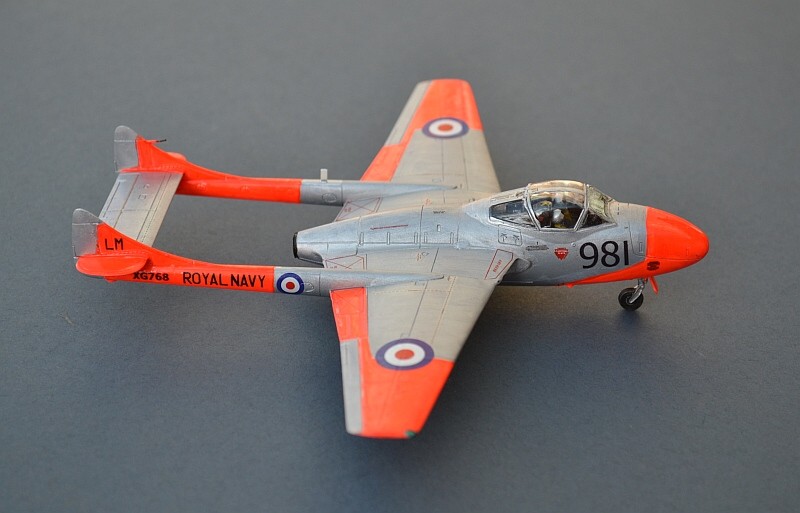
Although too late to see active combat in WW2, the first flight of the Vampire prototype took place in September 1943, with the first production aircraft entering RAF service in April 1945. Amongst other firsts, the single seat naval Sea Vampire variant (see below) was the first jet aircraft ever to land on an aircraft carrier.
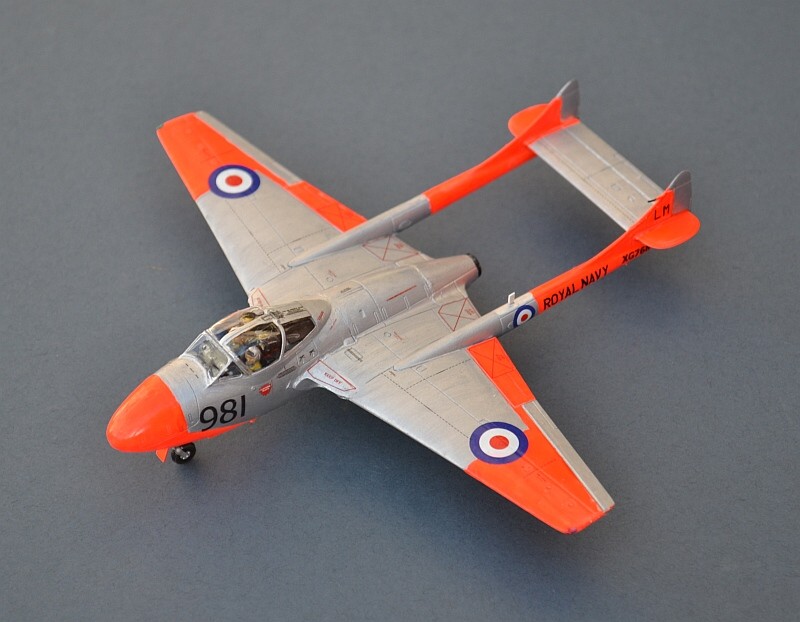
Two seat Vampire trainers remained in service with the RAF and Royal Navy until the mid 1950s and with the RAN and RAAF until the early 1970s.
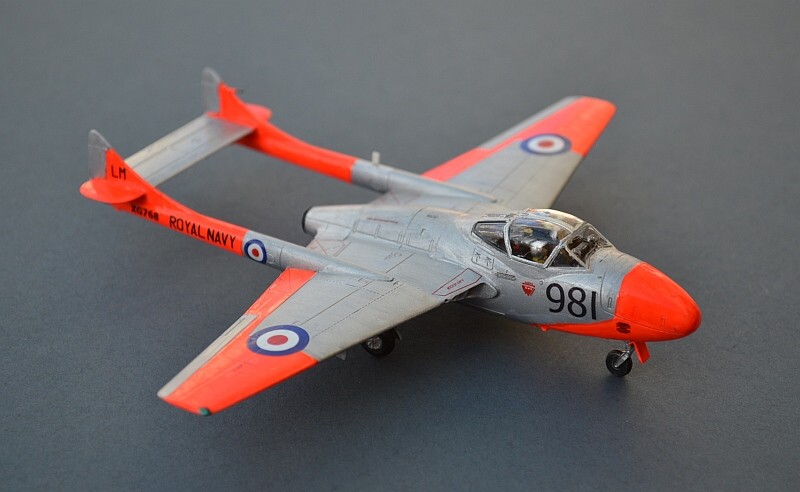
Seventy three Sea Vampire T.22s were built for the Fleet Air Arm, based on the RAF's T.11 variant with a slightly different naval radio fit. 738 Sqn at Lossiemouth formed the Naval Air Fighter School, operating Vampires and Sea Hawks until the arrival of the Hunter in 1962.
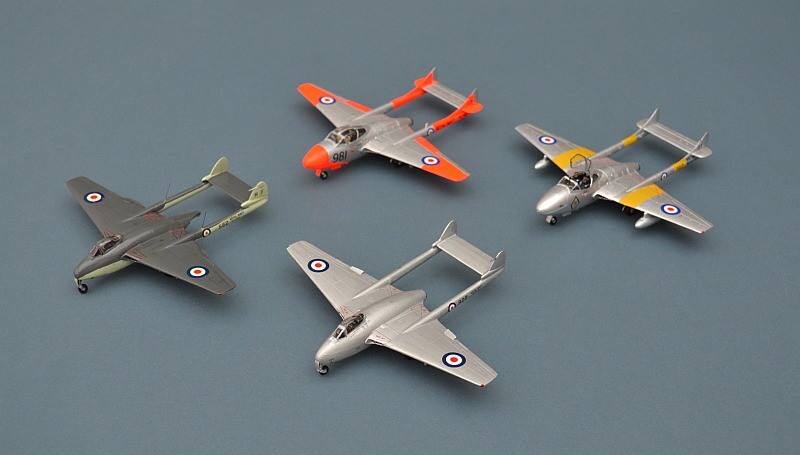
A coven of Naval Vampires and Sea Vampires!
This is such a nice kit that I just had to build another. This is a slightly easier scheme to paint, again using a mix of kit transfers, plus some from the spares box, plus some inkjet printed ones. Link to Build Page
Back in the 1950s, the Fleet Air Arm maintained a number of shore-
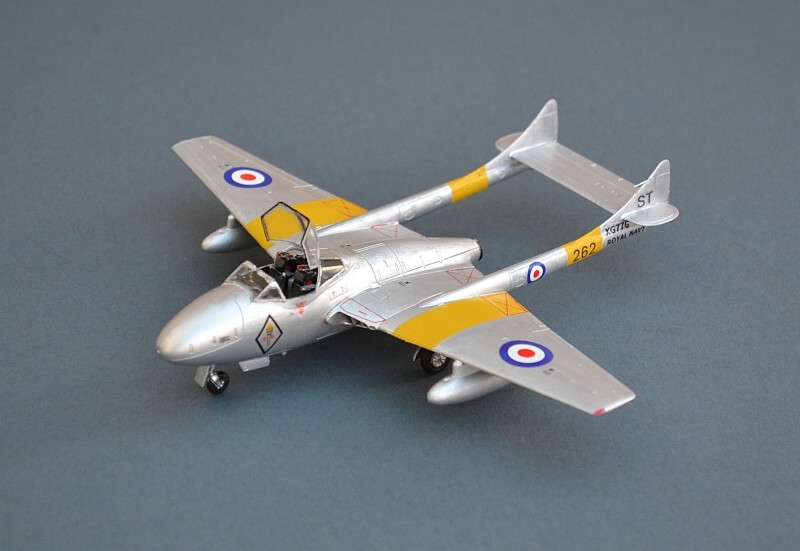
The RNVR Air Branch was dissolved in 1957 in the wake of the infamous 1957 Duncan Sandys Defence White Paper; RNAS Stretton closed a year later.
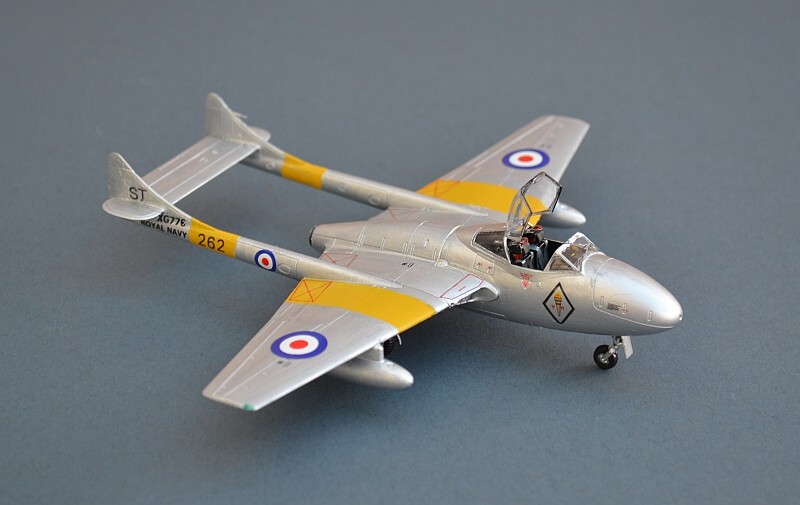
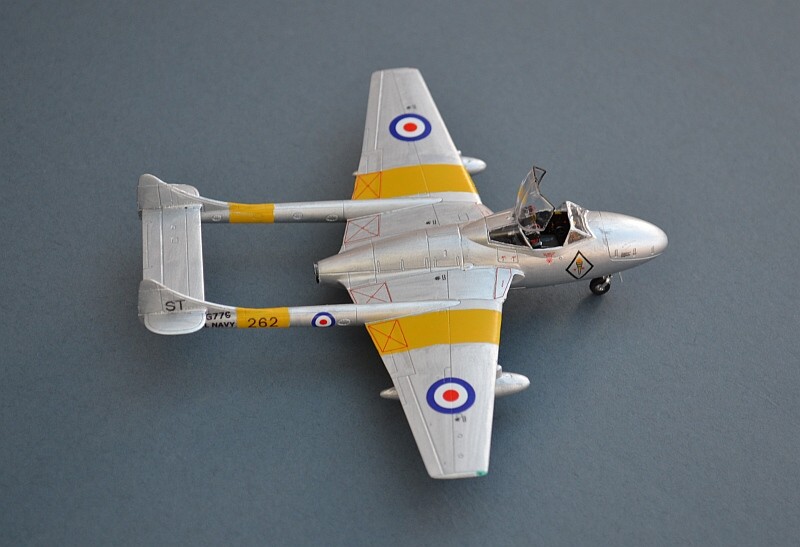
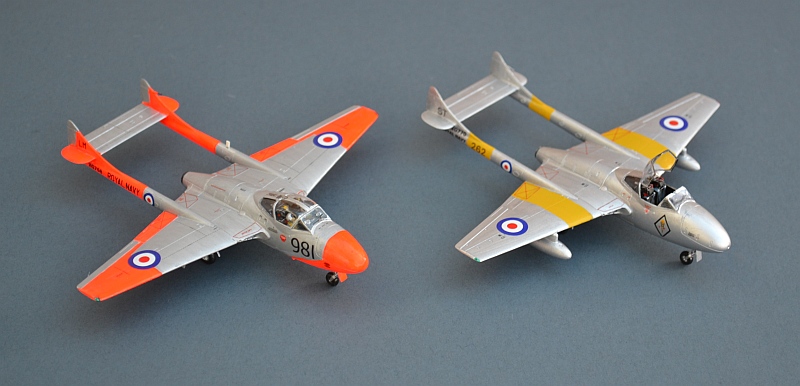
This is the old Heller Vampire/Mistral in its 2013 Revell release with some spare decals to depict a Fleet Air Arm aircraft. A nice little kit, beginning to show its age. But still holding its own against more modern Vampire kits. Link to Build page See the bottom of this page for my Sea Vampire conversion of the same kit.
This rather plain Vampire FB.5 was used in the early 1950s by HMS HERON as a station flight aircraft.
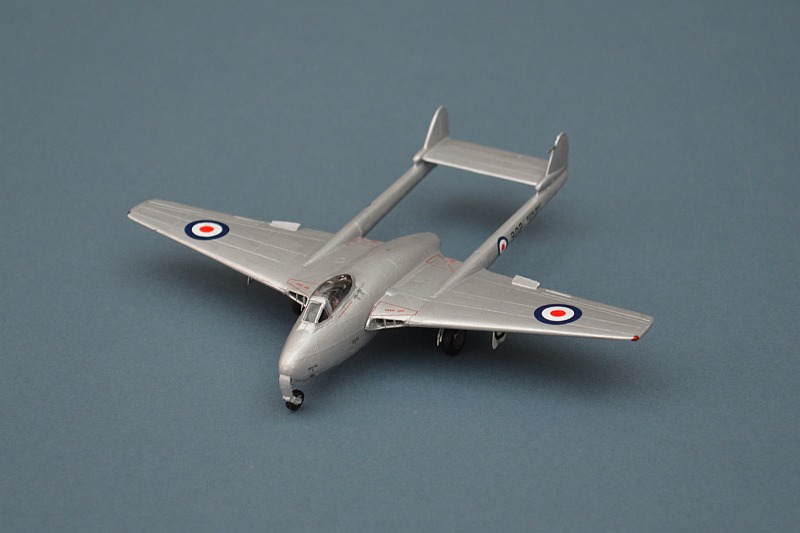
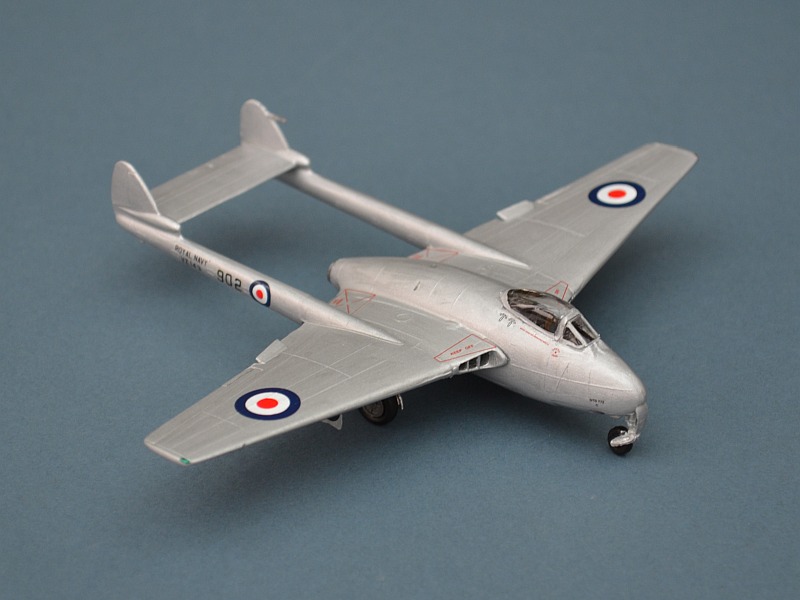
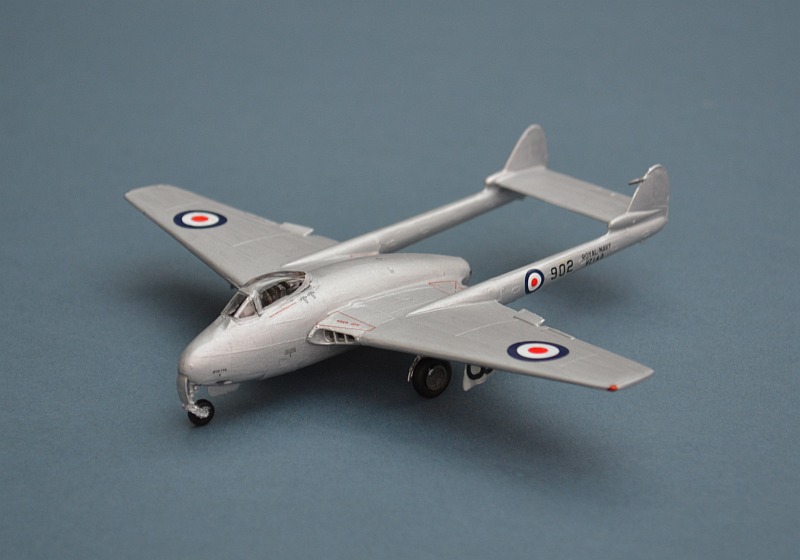
This FROG kit has Modeldecal markings and a Falcon vacform canopy to turn it into an Attacker FB.2 . The kit cockpit consists of a flat deck (flush with the upper fuselage) and a pilot's head, so I dug this one out and hid the horrors with a spare generic seat and pilot !
Early Attacker F.1s were of limited use and were quickly converted to the FB.1 by
adding underwing weapons pylons for unguided rockets to give them a ground attack
capability. An up-
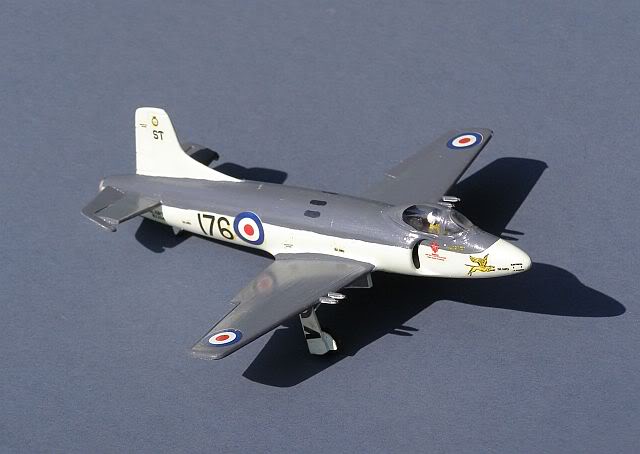
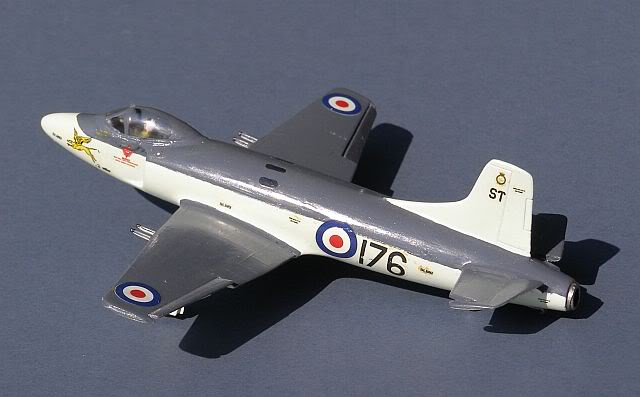
The Heller Vampire has also been released by Airfix and is a good kit, with commendably fine detail. Sadly, however much lead you fill it with, it will still sit on its tail!
This one has been subtly modified into a Sea Vampire by adding an arrestor hook and extended flaps. Link to Build Page
The Admiralty was quick to recognise the Vampire's strengths and quickly sought to
use it at sea by adding an arrestor hook and increasing the area of the flaps. As
such it became the first jet ever to land on an aircraft carrier, in the capable
hands of RN Test Pilot Lt Cdr (later Captain) Eric "winkle" Brown. Although successful,
Brown's first landing was a hairy affair, with the aircraft's tail booms striking
the deck round-
Whilst testing showed the Vampire's general handling to be well suited to carrier landings, the poor power response of the early Goblin jet engine meant that it would not be safe to operate at sea, leaving the ungainly Attacker, with its more responsive Rolls Royce Nene engine, as the choice for the RN's first operational jet fighter. Nevertheless, the Fleet Air Arm operated significant numbers of English Electric built Sea Vampires from shore bases, where they provided valuable early experience in jet handling.
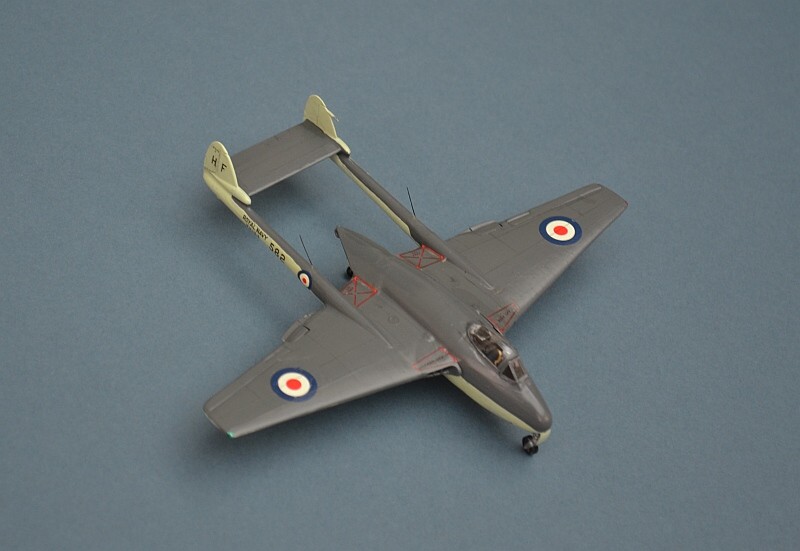
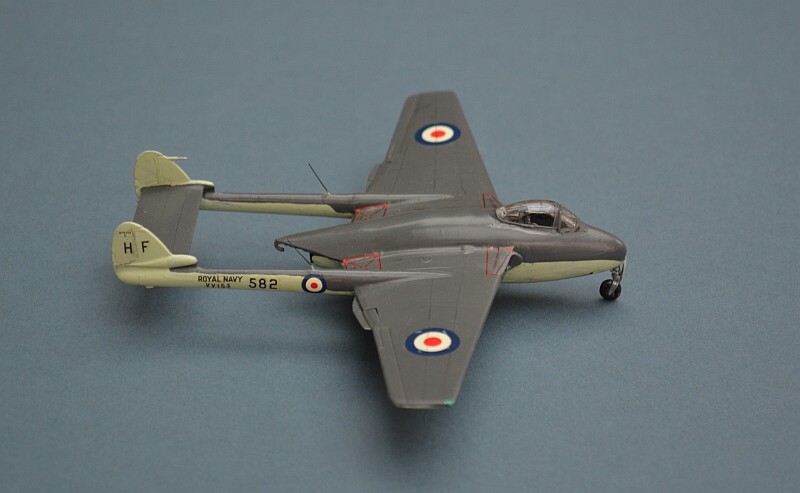
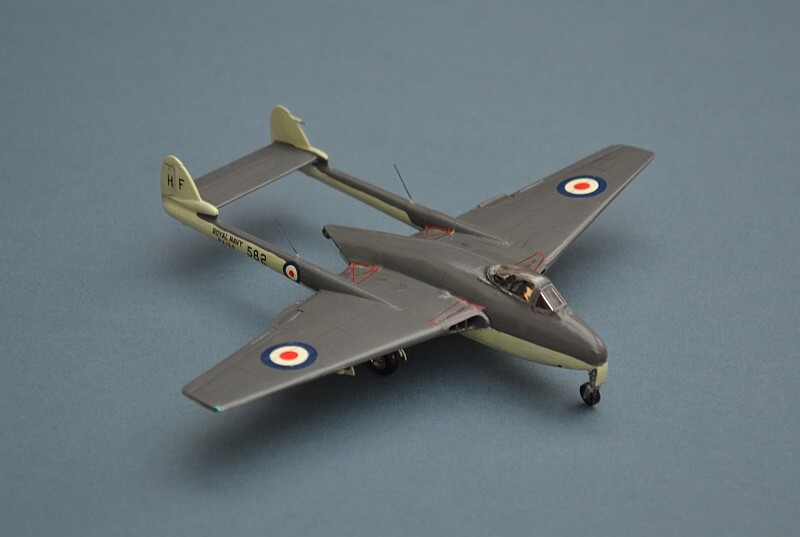
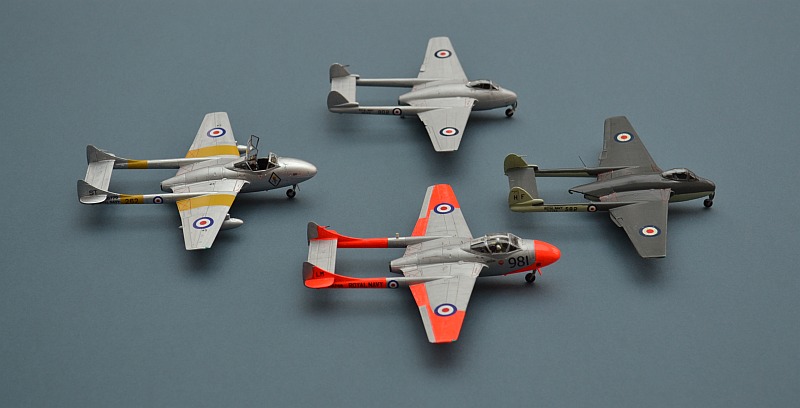
This is the FROG Vampire, modified to become another Sea Vampire, in this case one that doesn’t need an undercarriage! Given its age, this is still a reasonable little kit, albeit devoid of any detail. Its main shortcoming is the lack of engine intake vanes. Link to Build Page
Perhaps the Sea Vampire's most unusual exploit was its participation in rubber deck landing trials, again piloted by Lt Cdr Brown.
The idea was for the aircraft to land on a soft surface, negating the need for an undercarriage. Brown' first landing nearly ended in disaster, as an excessive sink rate caused him to hit the deck edge, with the arrestor hook bouncing up and jamming in its fairing. The aircraft penetrated through the rubber deck, then bounced back into the air. Brown tried to accelerate away but found that the jammed hook had damaged his elevator, so was forced to cut power and belly flop back to earth, fortunately without injury.
The rubber deck concept was eventually abandoned, as new engines brought greater power, thus reducing the criticality of weight and permitting the retention of suitable landing gear!
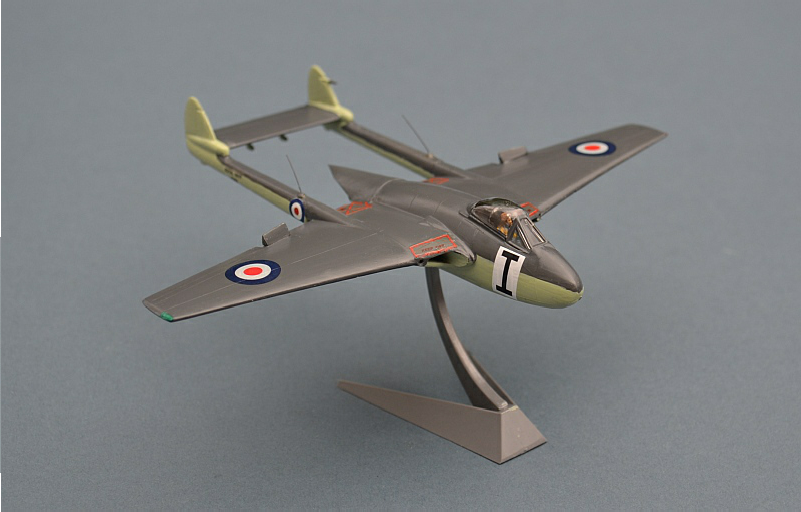
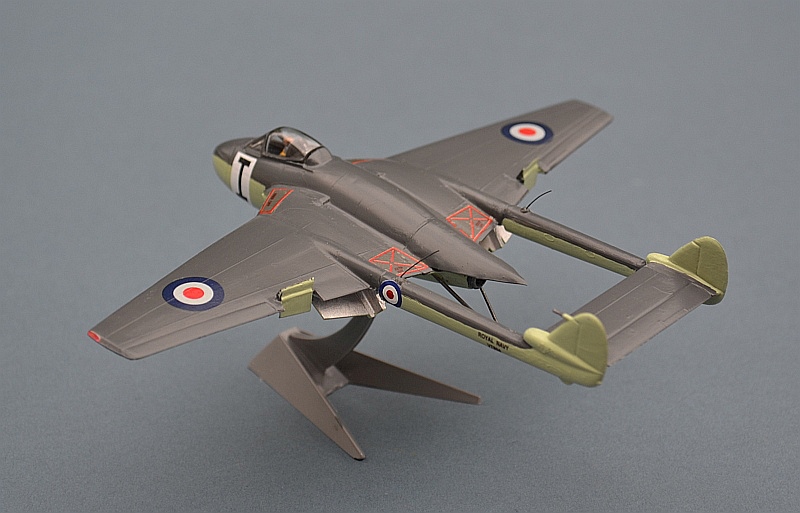
This is the same underlying kit , but with the supplied canopy. Link to Build page
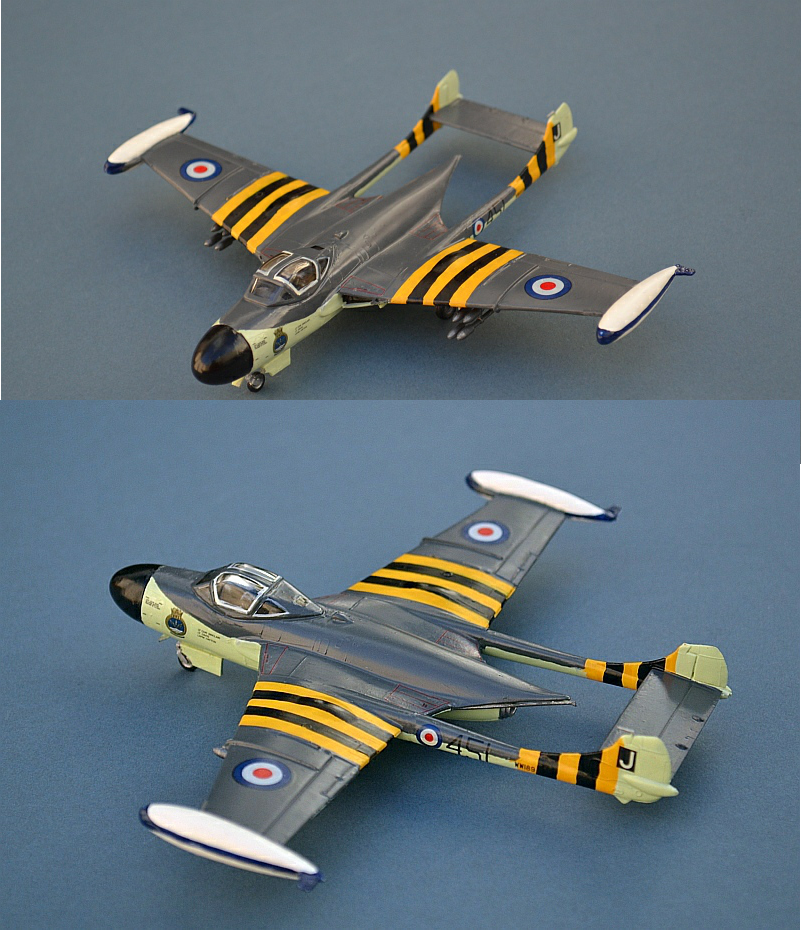
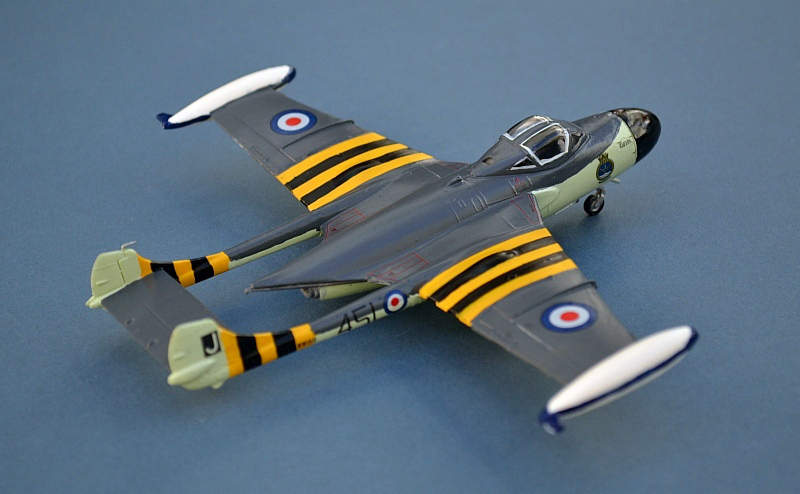
Return to Fred's Models main index
Click on the thumbnail to go directly to the individual aircraft models, or simply scroll down
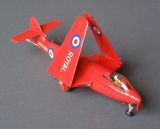
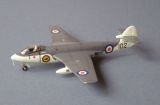
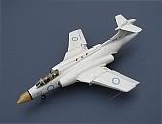
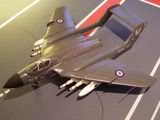
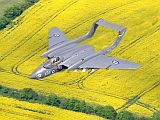
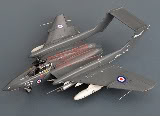
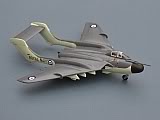
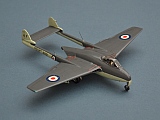
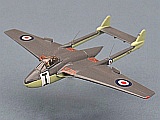
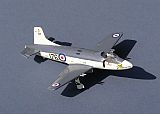
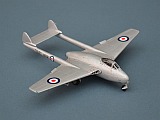
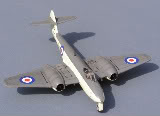
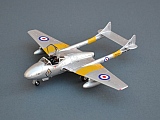
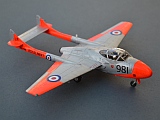
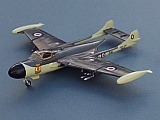
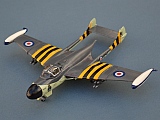
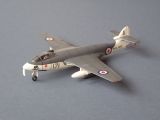
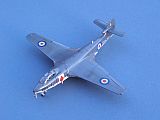
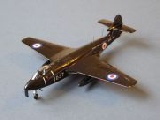
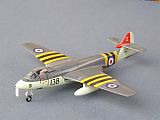
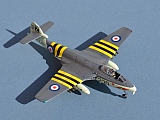
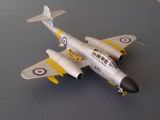
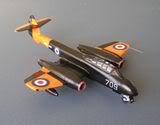
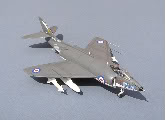
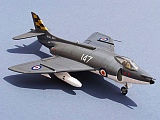

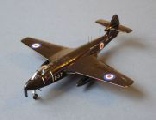
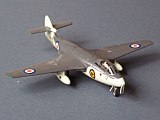
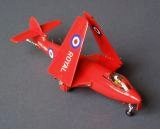
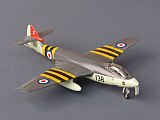
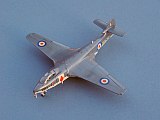

Xtrakit and MPM produced this 1/72 Sea Vixen kit in 2008, which can be built as an FAW.1 or FAW.2 . It is not an easy build, with some disappointing omissions and errors, but can still be made into a fine replica. Decals are a mix of kit, Model Art, FROG and Xtradecal.

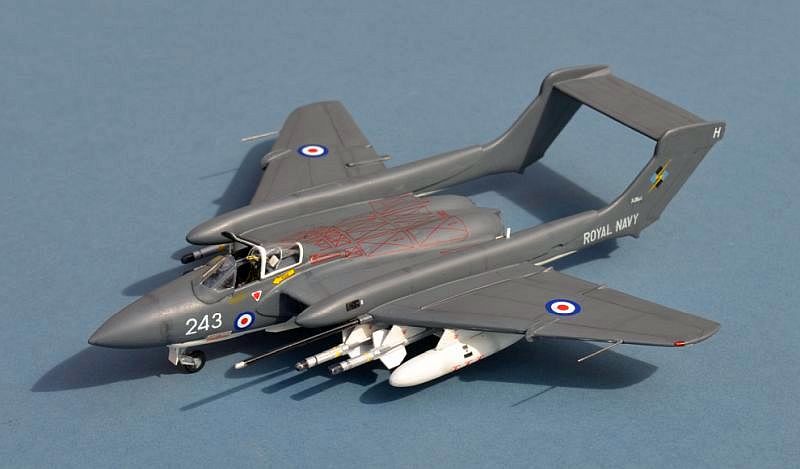
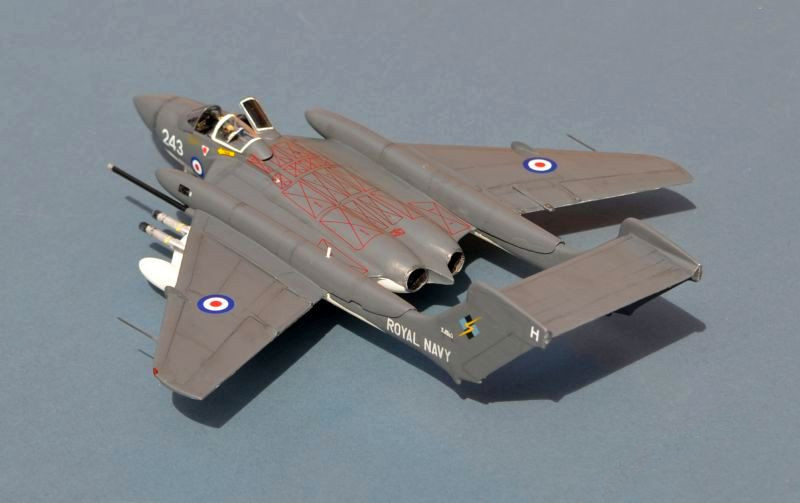
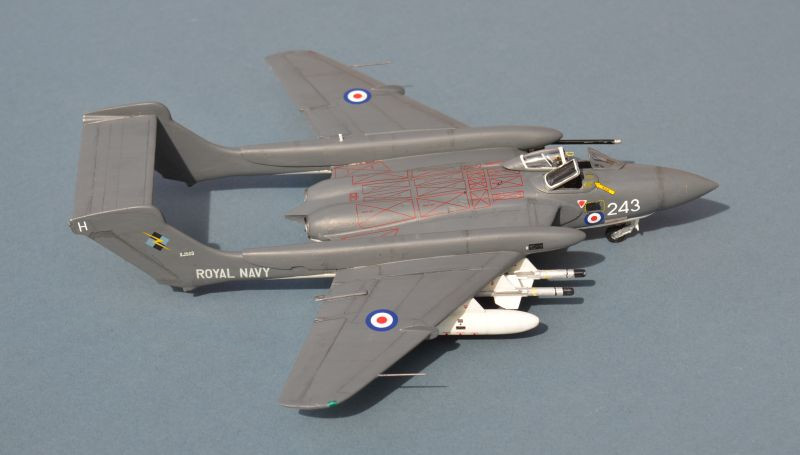
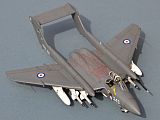
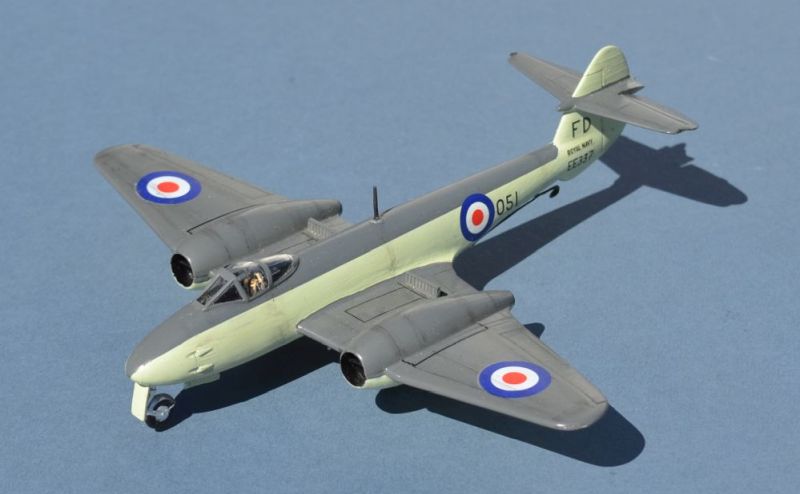
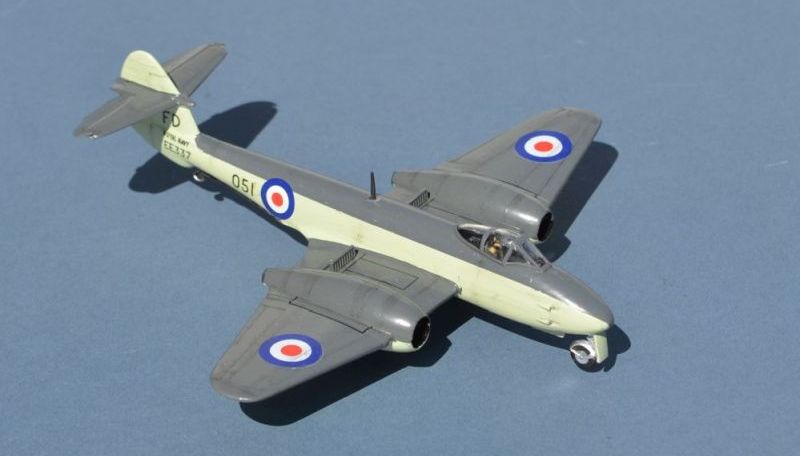
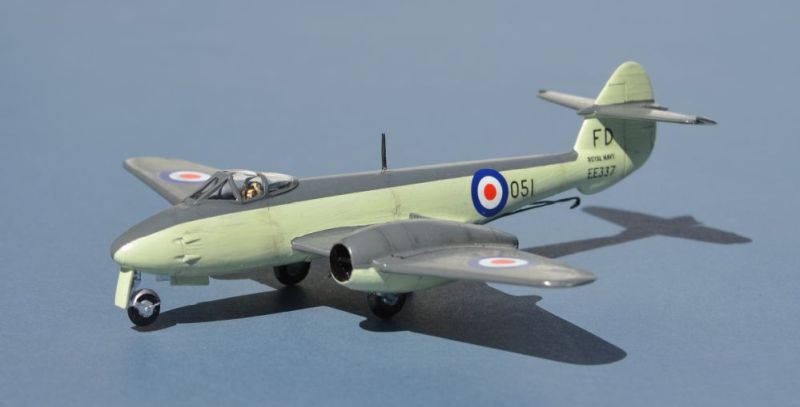
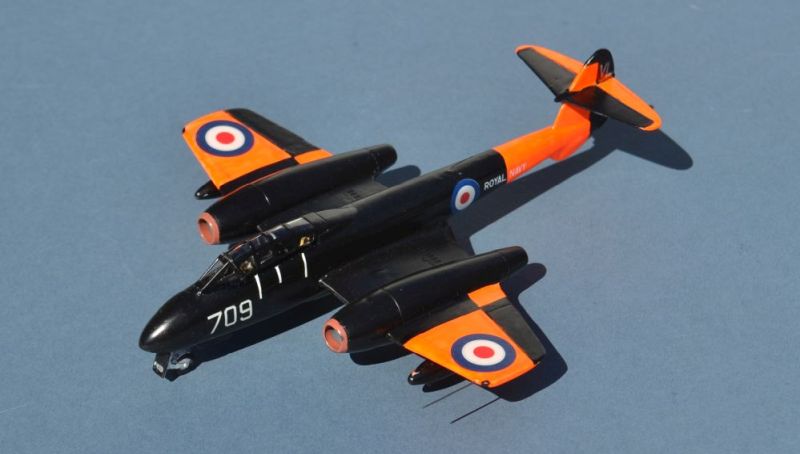
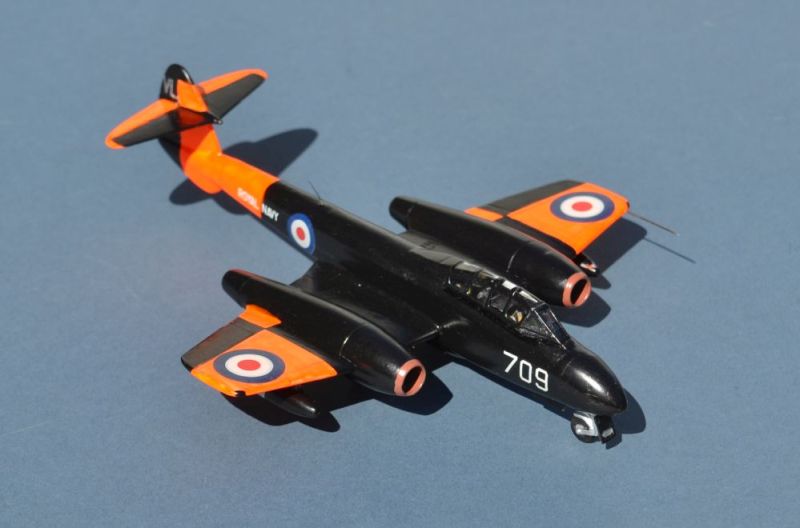
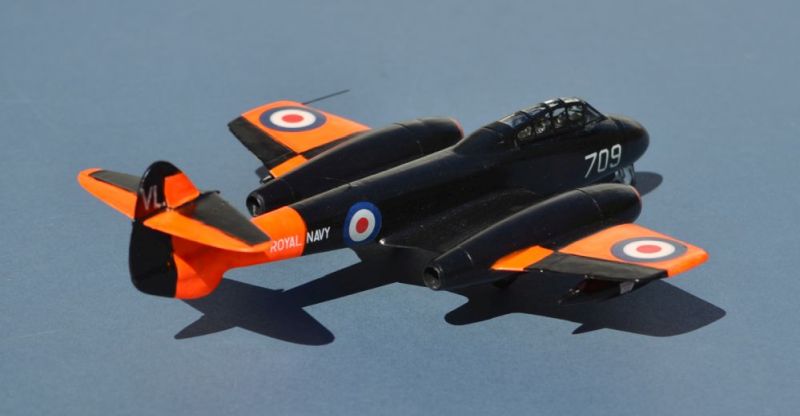
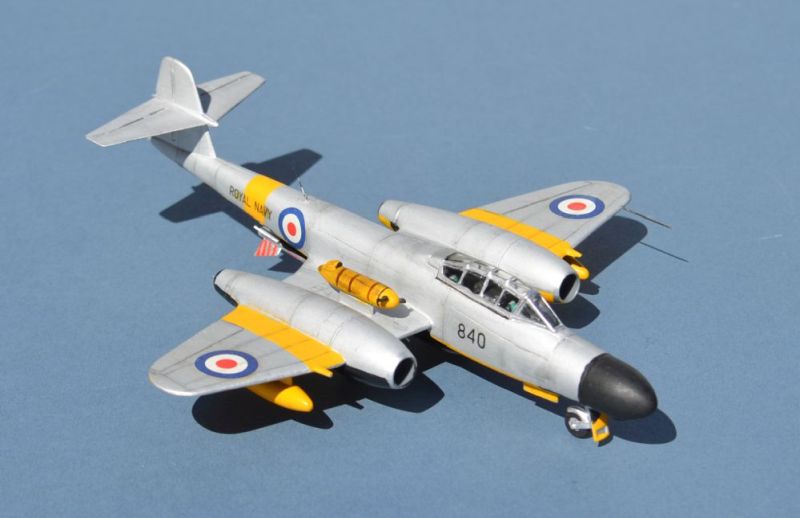
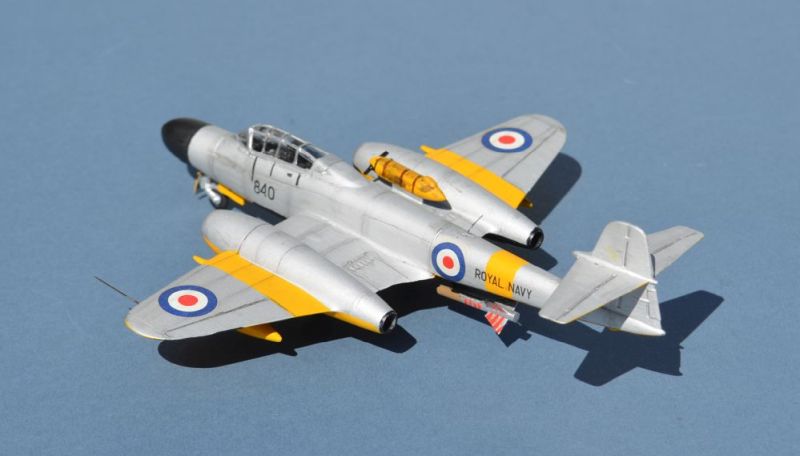
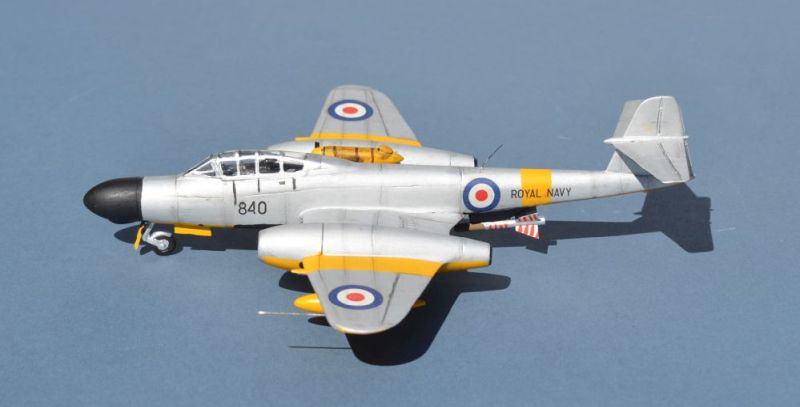
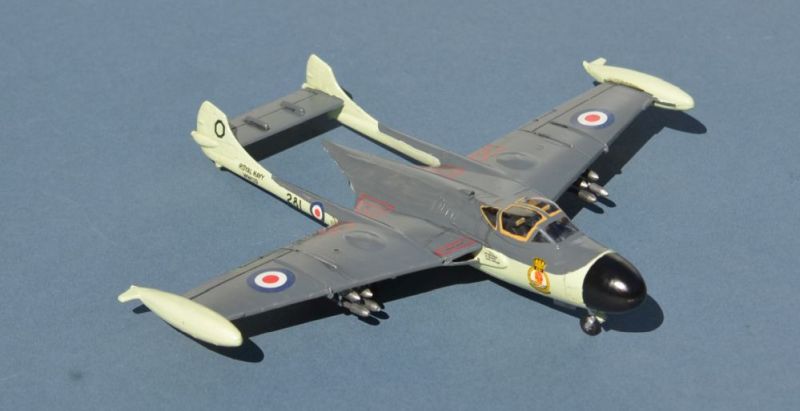
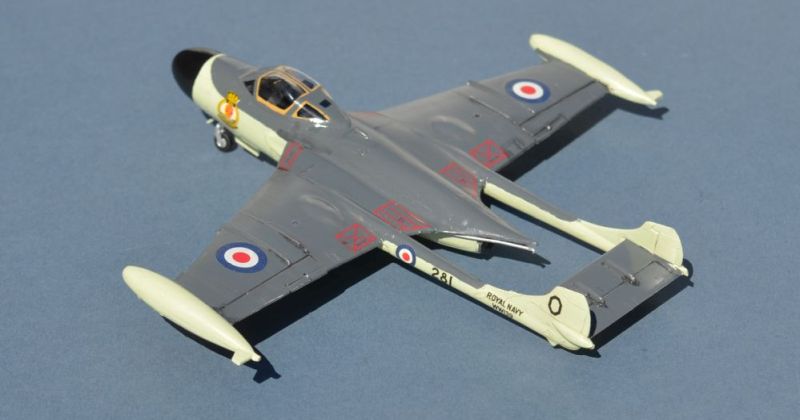
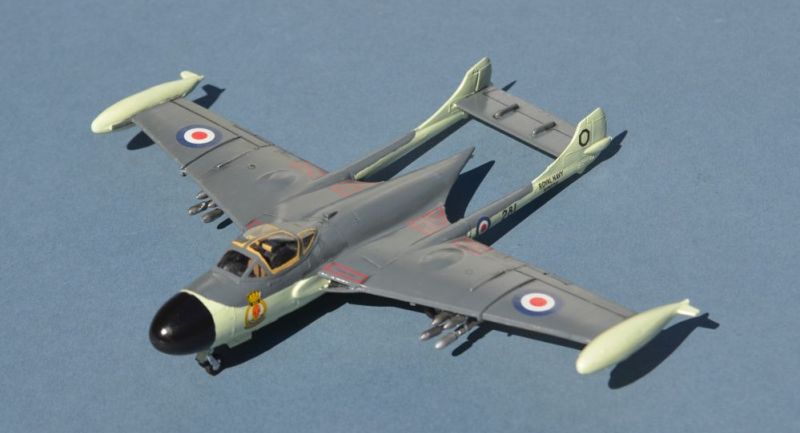
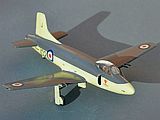
Frog's Attacker was one of their earliest kits and indeed may originally have been bought in from another manufacturer. It’s crude and not very accurate (errors in the tailplane and canopy are particularly noticeable). However, until recently, it was the only 1/72 model of this type.
The Attacker was the FAA's first operational carrier based jet fighter. Although
the Vampire had made the first jet carrier landings, the Admiralty opted for the
more conservative tail-
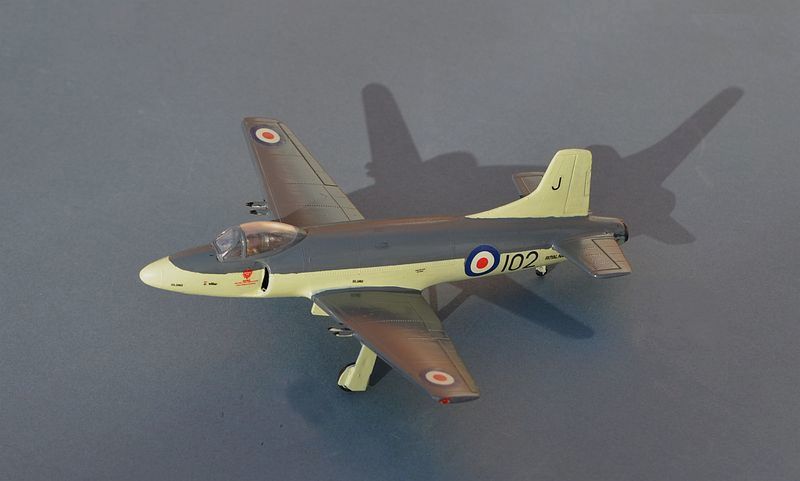
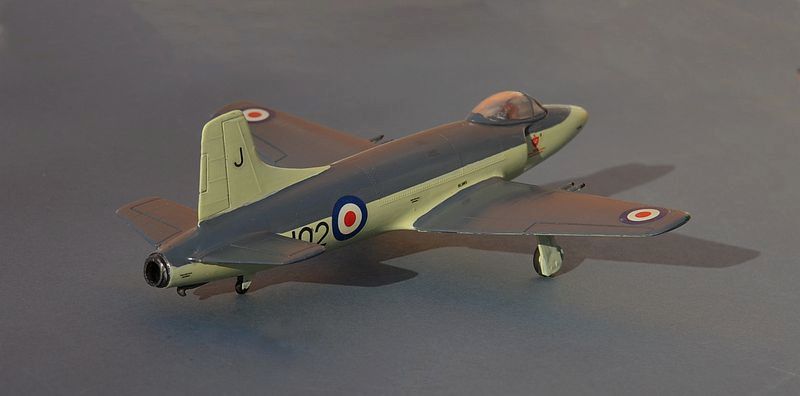
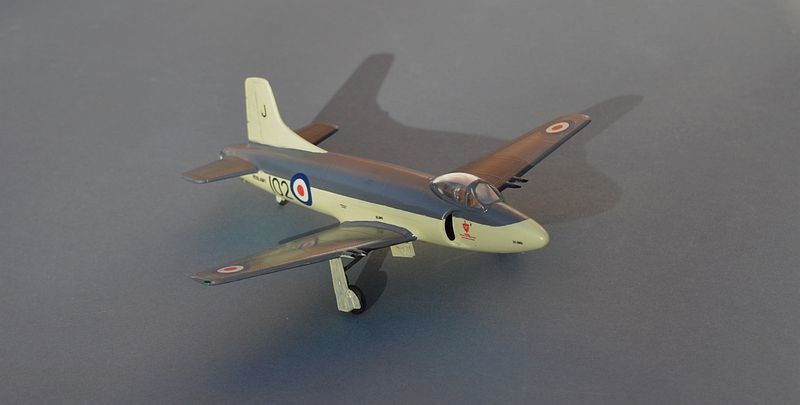
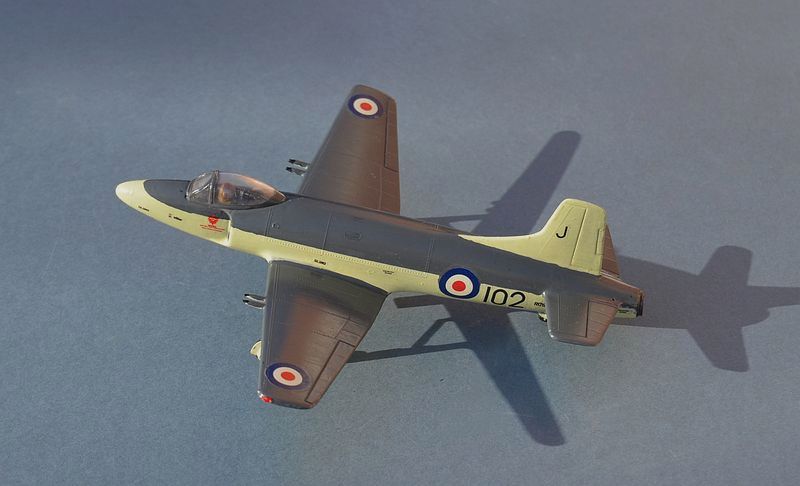
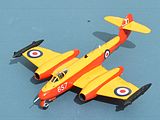
Gloster Meteor U.15 Pilotless Target Drone, Seaslug Missile Trials, 728B Trials Sqn RNAS Hal Far, Malta, 1960.
FROG F.4 kit, with scratch Camera Pods and decals from the spares box. Link to Build Page
Surplus former RAF F.4 Meteors were converted into radio controlled pilotless target drones for various missile trials. The RN operated several from RNAS Hal Far in Malta, during 1960 as targets for Seaslug missile test firings.
